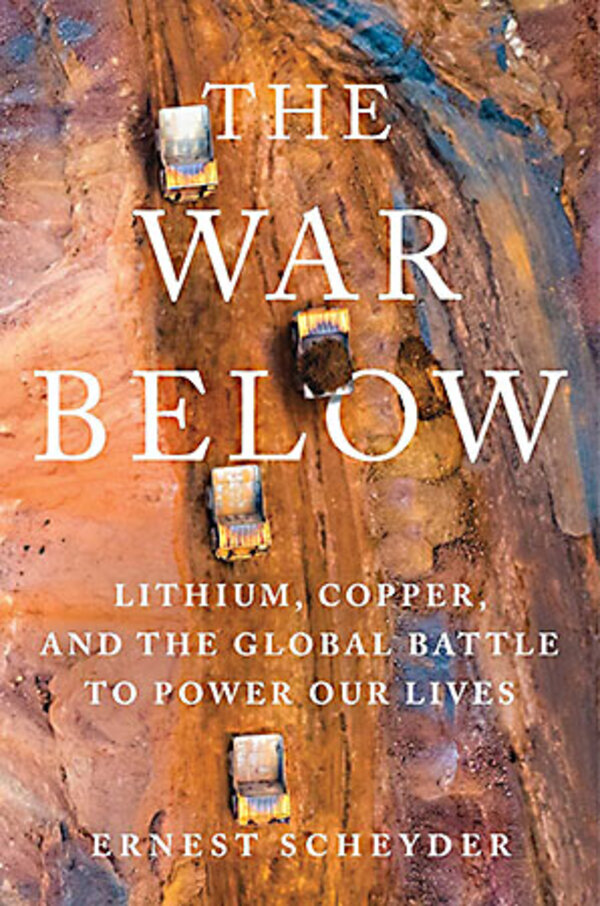Lithium is key to green technology. Where will the US source it?
Loading...
As America moves from fossil fuels to renewable energy, it must increase its supplies of lithium, copper, nickel, rare earths, and cobalt. These minerals are key components in electric cars, solar panels, wind turbines, and other green technologies. Because there are few domestic suppliers of these metals, the United States is forced to rely on a number of countries that are hostile or politically unstable, or that use child labor. But building new mines in the U.S. is controversial and unpopular.
This conundrum is examined in “The War Below: Lithium, Copper, and the Global Battle To Power Our Lives” by Ernest Scheyder. In clear and nuanced prose, he analyzes the search for these building blocks of renewable energy and the barriers to getting them.
Scheyder, who has covered the energy beat for Reuters, begins by discussing the kinds of new metals that will be needed, why they are important, and where we might find them. Most important, he convincingly demonstrates that by offshoring these minerals, the U.S. places itself and its industries in a vulnerable position.
For example, China is the world’s largest producer of lithium. Even when the metal is mined in other countries such as Australia, most of the processing is done in China. The country is also the world’s largest consumer of copper and buys aggressively from Chile. By contrast, copper production in the U.S. is falling.
Indonesia has large supplies of nickel – which allows electric vehicles to drive farther on a single charge – but it blocks exports of this metal so it can build its own electric vehicles. Meanwhile, the only U.S. nickel mine will be depleted in 2025.
The Democratic Republic of Congo holds the world’s largest supply of cobalt, but the country is riven by violence, and child labor is often used to extract the minerals.
America has substantial known reserves of both lithium and copper. But nothing generates intense political opposition like a proposal for what the author calls a “loud, dangerous and disruptive” open-pit mine. As it happens, noise and disruption are only two factors that play into the complex web of opposition for mining projects.
As Scheyder notes, “Despite the role such proposed U.S. projects would play in abrogating climate change and even lessening the cost of green energy products, each one faces strong, legitimate opposition from environmentalists, neighbors, Native American groups, or others, underscoring the dilemma facing the country as it tries to go green.” In short, it’s not just one problem; it’s a whole set of challenges.
Consider lithium. A very light metal, it is “enormously good at retaining an electric charge, making it the perfect anchor for a lithium-ion battery.” There are large reserves of lithium located in Rhyolite Ridge, Nevada. But the locale is also the home of a small, extremely rare plant known as Tiehm’s buckwheat that flourishes in lithium-rich soil. One federal regulatory agency declared Tiehm’s buckwheat an endangered species – which could have killed any possible project – while another agency gave a mining company $700 million to build a mine. Scheyder calls this an example of the government’s left hand not knowing what its right hand is doing.
This may be the most dispiriting theme of the book – the inability of the federal government to develop a clear, comprehensive approach to obtain the precious metals needed to support green energy initiatives. Policies put in place by one administration are quickly overturned by the next. Federal agencies act in ways that simultaneously advance the efforts to acquire these metals while at the same time undermining them.
Scheyder is fair and evenhanded. He considers each project on its own merits and gives a careful summary of all the views expressed. As he emphasizes, “Energy security used to be about crude oil and natural gas. Now it’s also about lithium, copper and other [electric vehicle] materials.”









